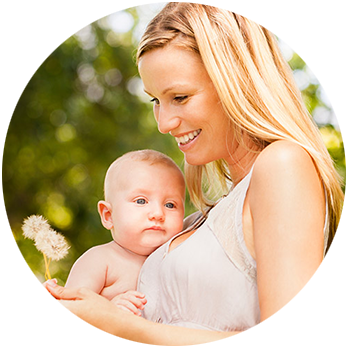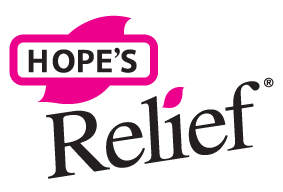IMPORTANT: The purpose of this page is to provide information on skin conditions, not to provide medical advice. Content was sourced from The Eczema Association of Australasia Inc. Links on this page to other sites on the Internet are provided for the benefit of site users and do not constitute medical advice, an endorsement of any other organisation /company or of their products or treatments. Hope’s Relief would like to thank The Eczema Association of Australasia Inc for permission to reproduce copyrighted material.
What causes Eczema rash and how can you treat it?
What is eczema?
Eczema (atopic dermatitis) is a recurring, non-infectious, inflammatory skin condition. It affects one in three Australians at some stage throughout their lives. It is most common in people with a family history of an atopic disorder, including asthma or hay fever.
Atopic eczema is the most common form of the disease among Australians. The skin becomes red, dry, itchy and scaly, and in severe cases, may weep, bleed and crust over, causing the sufferer much discomfort. Sometimes the skin may become infected. The condition can also flare and subside for no apparent reason.

What are eczema symptoms?
- Moderate-to-severely itching skin
- Rash
- Dry, red, patchy or cracked skin
- Skin weeping watery fluid
- Rough, leathery, thickened skin
What causes eczema?
The exact cause is unknown. It appears to be linked to the these triggers:
Internal eczema triggers
- A family history of eczema, asthma or hay fever (the strongest predictor): if both parents have eczema, there is an 80 per cent chance that their children may also develop eczema
- Some foods and alcohol: dairy and wheat products, citrus fruits, eggs, nuts, seafood, chemical food additives, preservatives and colorings
- Stress
External eczema triggers
- Irritants: tobacco smoke, chemicals, weather (hot and humid or cold and dry conditions) and air conditioning or overheating
- Allergens: house dust mites, moulds, grasses, plant pollens, foods, pets and clothing, soaps, shampoos and washing
How can the symptoms of eczema be relieved?
According to the Eczema Association of Australasia Inc, there are a number of ways symptoms can be reduced for both children and adults.
- Learn your eczema triggers and how to avoid them.
- Stress less!
- Develop and maintain a daily skin routine.
- Look for skincare products that contain natural ingredients, can be used on sensitive skin, do not irritate or inflame and contain no nasty ingredients.
- Keep fingernails short to prevent scratching from breaking the skin.
- Avoid rapid changes of temperature.
- Have lukewarm baths and showers.
- Gently pat, not rub, your skin dry with a soft towel.
- Apply moisturiser within three minutes after bathing to lock in the moisture.
- Use hypoallergenic products and avoid anything perfumed.
- Wear cotton mitts or gloves at night.
- Avoid rough, scratchy synthetic fibres and tight clothing.
- Use rubber gloves with cotton liners.
- Eliminate dust mites in your home.
- Use sensitive skin washing powders and detergents.
Who suffers from eczema?
- Infantile eczema usually starts in the first 6 months of life and symptoms include a red itchy rash and dry skin. Infantile eczema usually improves significantly between the ages of 2 to 5 years.
- Childhood eczema may follow or can start for the first time between the ages of 2 to 4 years. The rash and dryness are usually found in the creases of the elbows, behind the knees, across the ankles and may also involve the face, ears and neck. This form of eczema usually improves with age. Although some children will completely outgrow their eczema, most will continue to have the tendency for dry and sensitive skin into adulthood.
- Adult eczema is similar to that of older children with areas of very dry, itchy, reddened skin at the elbow creases, wrists, neck, ankles and behind the knees. Skin may also have weeping areas. Although the condition tends to improve in middle life and is unusual in the elderly, it can still occur.
(The Australasian Society of Clinical Immunology and Allergy, 2013. https://www.allergy.org.au/patients/skin-allergy/eczema, accessed 13 July 2015).
Further reading for for people living with eczema
The Eczema Association of Australasia Inc
The Eczema Association of Australasia’s aim is to improve the life for those involved with eczema through community representation and education. The EAA aims to reach all those Australians who live with this debilitating disease everyday. They need to know that they can get help, support, education and relief. Here on their official website, sufferers and carers can obtain and download all the necessary information needed.
Health Direct
Funded by the Governments of Australia, healthdirect provides easy access to trusted, quality health information and advice online (www.healthdirect.gov.au) and over the phone (1800 022 222). It’s available 24 hours a day, 7 days a week, to help you make informed choices anywhere, any time. Visit http://www.healthdirect.gov.au/eczema for more information.
The Australasian Society of Clinical Immunology and Allergy
The Australasian Society of Clinical Immunology and Allergy (ASCIA) is the peak professional body of clinical immunology and allergy specialists in Australia and New Zealand. Visit www.allergy.org.au/patients/skin-allergy/eczema to learn more.
The purpose of this page is to provide information on skin conditions, not to provide medical advice. Content was sourced from The Eczema Association of Australasia Inc. Links on this page to other sites on the Internet are provided for the benefit of site users and do not constitute medical advice, an endorsement of any other organisation /company or of their products or treatments.
My Virtual Medical Centre
Virtual Medical Centre is one of Australia’s leading medical information websites. It delivers the latest medical information written by medical professionals.
